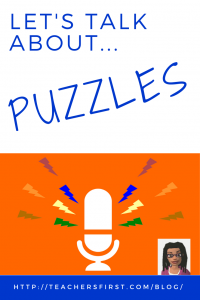 Here in the United States, National Puzzle Day is celebrated on January 29th. It is the perfect time to inject some levity into the K12 day. If you have not used puzzles in your lessons before, you are in luck! We’re about to explore why you should.
Here in the United States, National Puzzle Day is celebrated on January 29th. It is the perfect time to inject some levity into the K12 day. If you have not used puzzles in your lessons before, you are in luck! We’re about to explore why you should.
First, solving puzzles can help students in a number of ways. It provides opportunities to work on communication, critical thinking/problem solving, creativity, and character education. When used as a group exercise, you can include collaboration. So really using puzzles in the classroom can help your students with many components of Deep Learning or The 6 C’s.
One of the most versatile puzzles to use is the jigsaw puzzle. Even in early childhood, your students can use jigsaw puzzles as a communication prompt. As they work on the puzzle, students can be prompted to stop and talk about what they see and make predictions about the image (make sure to hide the box top). You can ask them to articulate the steps they want to take to solve the problem. Solving the “right size” jigsaw puzzle may take some patience and perseverance, so be prepared to work with your students on these social-emotional skills. Completed puzzles can be used as writing prompts and conversation starters. Don’t have content area jigsaw puzzles for your students to work on? Not a problem. Use Jigsaw Planet (reviewed here) and create one using any image. Remember to observe copyright!
Another type of puzzle that can be used across all content areas is the escape room or breakout. These puzzles have moved from actual boxes with locks to online versions. In fact, here at TeachersFirst, we did an OK2Ask workshop last year on how to create them. You can watch the archive here. One way to make a free escape room puzzle is by using Room Escape Maker (reviewed here). Creating your own escape room is a great way to weave content area information into the puzzle. That way, students can be discussing the terms and concepts they are learning as they manipulate that information to solve the puzzle.
Math, problem solving, and critical thinking blend together well. Even if you don’t teach math, you can use “math type” puzzles to engage your students. No matter the class, math puzzles can be used to practice communication, creativity, character education, and even collaboration. Math puzzles make great instructional sets as well. A few great sites to try include: Which One Doesn’t Belong (reviewed here), Shikaku Madness (reviewed here), and 4 Numbers Game (reviewed here).
How will you use puzzles in your classroom on National Puzzle Day?

